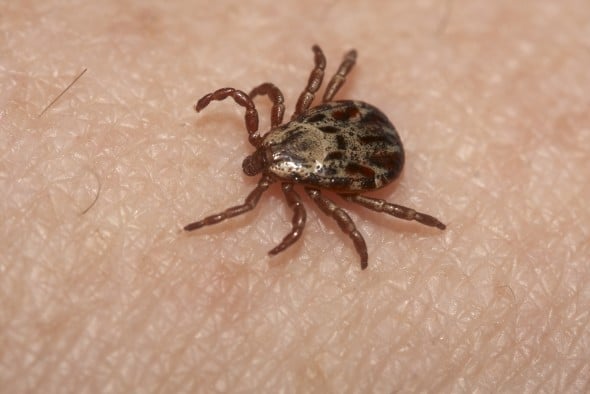The Wyoming Department of Health (WDH) is reminding Carbon County residents to take steps to prevent tularemia after an infected animal was found recently locally.
A dying squirrel found in Rawlins recently tested positive for tularemia, a disease that can be serious and potentially deadly for humans. Wyoming Game and Fish Department staff submitted the animal to the Wyoming State Veterinary Laboratory in Laramie for testing.
Tularemia, also known as deer fly fever or tick fever, is a bacterial disease affecting many species of wild and domestic animals and can be spread to humans. The disease frequently affects rabbits, hares and ground-dwelling rodents and also affects cats, dogs, sheep, pigs and horses. Cats are at higher risk due to their hunting nature.
“People may become ill with tularemia after being bit by ticks, deer flies or horse flies,” said Dr. Alexia Harrist, state health officer and state epidemiologist with WDH. “It can also be transmitted through breaks in the skin or through breathing airborne dust when handling infected wild or domestic animals, or through ingestion or contact with insufficiently cooked meat or untreated, contaminated water.”
“Because of the public location of the recently found squirrel, we are reminding people that it is never a good idea to handle, or let their pets handle, wild animals found sick or dead,” Harrist said.
Steps to help avoid tularemia include:
- Never touch a dead or sick animal and give wildlife their space.
- Wear light-colored clothing to make it easier to see ticks crawling on clothing.
- Tuck pant legs into socks.
- Apply insect repellents such as those containing 20 percent or more DEET and/or picaradin.
- Upon return from potentially tick-infested areas, search self and children for ticks and remove if found.
- Check pets for ticks; use tick control products recommended by veterinarians.
- Prevent pets from bringing caught wild animals to your home
- If you have an ill pet, promptly seek veterinary care
Tularemia symptoms can include fever, swollen and painful lymph glands, inflamed eyes, sore throat, mouth sores, skin ulcers and diarrhea. If the bacteria are inhaled, symptoms can include sudden onset of fever, chills, headache, muscle aches, joint pain, dry cough and progressive weakness and pneumonia. “If you become ill and think you may have been exposed to tularemia, we recommend you seek medical care,” Harrist said.
More details about tularemia are available at https://health.wyo.gov/publichealth/infectious-disease-epidemiology-unit/tularemia/


